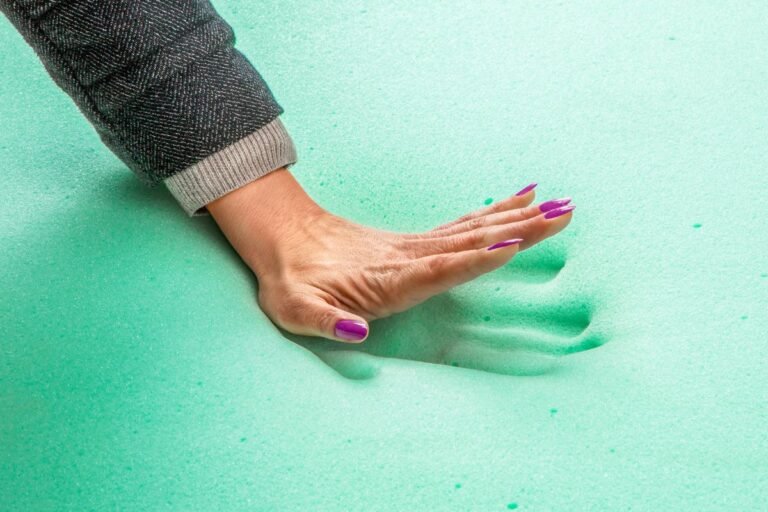Braided rugs add warmth and texture to any room, but they can get dirty and dingy over time.
Don’t worry, cleaning them is easier than you think!
Follow these step-by-step instructions to restore your braided rug to its former glory.
From vacuuming to rinsing, we’ll cover everything you need to know to get your braided rug looking and feeling brand new. So grab your cleaning supplies and let’s get started!
How To Clean Braided Rugs, Step-By-Step
Revive your braided rug with these step-by-step cleaning instructions! From shaking out dirt to scrubbing away stains, we’ll walk you through all the techniques to clean a braided rug so that you can get your rug looking and feeling like new.
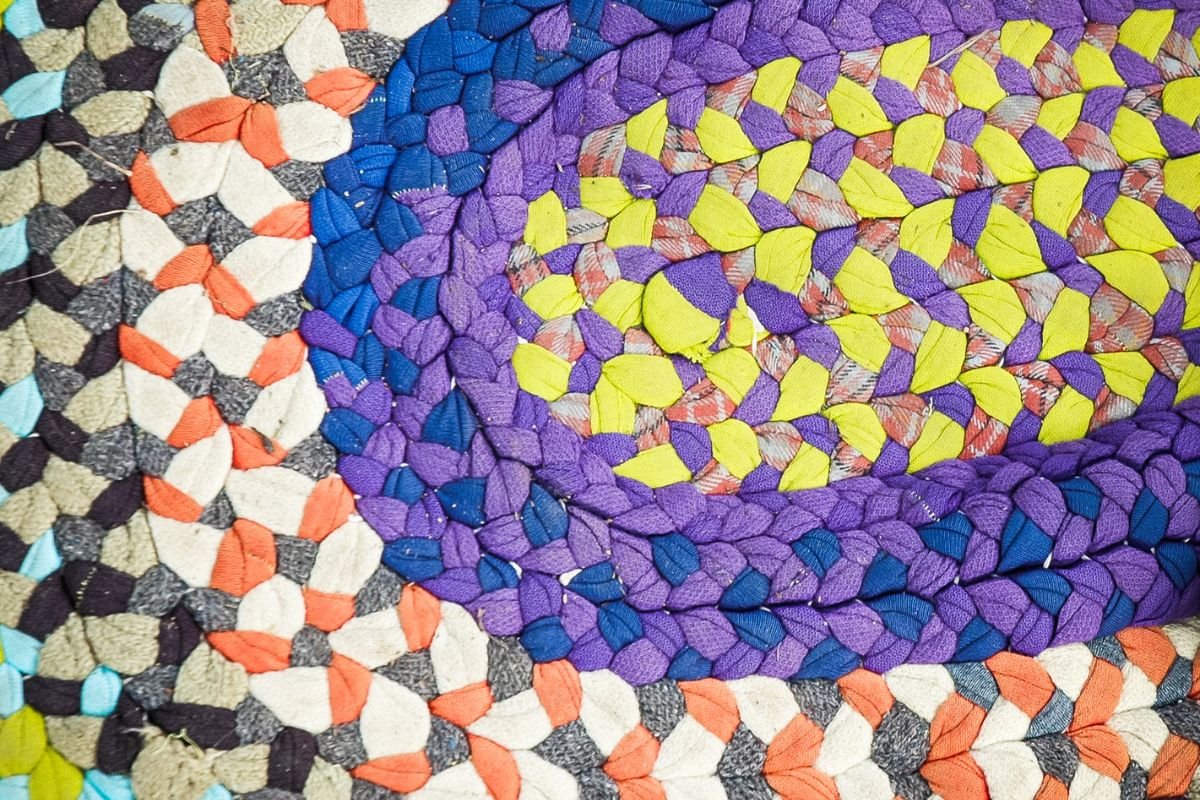
1. Vacuum the rug to remove any loose dirt or debris.
If the rug is small enough, you can take it outside and shake it vigorously to loosen any dirt or debris that is stuck in the braids. Find a flat, open area outside to shake the rug. Avoid shaking the rug near plants, trees, or other objects that could get damaged by the dirt and dust that is dislodged from the rug.
Hold onto the edges of the rug and shake it back and forth and up and down. You can also twist the rug to help loosen dirt and dust particles that are stuck in the braids. If the rug is particularly dirty, you may need to shake it for several minutes to loosen as much dirt and debris as possible.
Or you could beat it with a broom or large stick for some homemade therapy 😉
For a more thorough cleaning, begin by removing any large pieces of debris, such as leaves or twigs, from the surface of the rug. Set your vacuum to the appropriate setting for the type of rug you are cleaning. If you have a high-pile rug, you may want to use the “low” setting to avoid damaging the fibers.
Start at one end of the rug and work your way towards the other end, using slow, steady strokes to cover the entire surface of the rug. Be sure to vacuum the back of the rug as well. Empty the dustbin or bag of your vacuum as needed to prevent it from becoming full and reducing the suction power.
If your rug has deep crevices or is particularly dirty, you may need to use the brush attachment or a hand-held brush to loosen and remove any stuck-on dirt or debris.
Once you have finished vacuuming the entire surface of the rug, use a lint roller or a piece of tape to remove any remaining dirt or debris that may have become stuck in the fibers.
2. Mix a solution of mild liquid detergent and water.
Fill a bucket or bowl with the cleaning solution that you have prepared. The cleaning solution should be a mixture of mild liquid detergent and water. You can use a small amount of dish soap or laundry detergent, like Dr. Bronners, or you can purchase a rug-specific cleaner. You can also mix half white vinegar and plain water for an all natural solution.
3. Dip a cloth or sponge into the cleaning solution.
Wet a cloth or sponge in the cleaning solution. Be sure to wring out the cloth or sponge so that it is not too wet, as excess water can cause the rug to become too wet and take longer to dry.
Use it to gently scrub any minor stains on the rug with a soft brush. Be sure to test a small, inconspicuous spot before applying the cleaner to the entire rug to ensure that the cleaner does not discolor the fabric.
If the rug is particularly dirty or has tough stains, you may need to try spot cleaning the stain by letting your deep cleaning solution soak on the material for a few minutes. Dab with a cloth soaked in water until the stain lifts.
If it snows where you are, then you can try cleaning your braided rope rugs with snow:
4. Rinse the rug thoroughly with clean water to remove any residue from the cleaning solution.
If the rug is small enough, you can place it in a tub or shower and use a hose or showerhead to rinse it. Make sure to turn the water to a low pressure setting to avoid ruining the braids.
If the rug is too large to fit in a tub or shower, you can use a bucket of clean water and a cloth or sponge to rinse it. Dip the cloth or sponge into the bucket of water and wring it out, then use it to wipe down the entire surface of the rug. Repeat this process until you have rinsed away all of the cleaning solution.
If you have access to a garden hose, you can lay the rug out on a flat surface in your yard and use the hose to rinse it. Again, be sure to use a low pressure setting.
PRO TIP: Stay away from a high pressure hose to avoid ruining the braids.
If none of these options are available to you, you can try using a spray bottle filled with clean water to mist the rug and rinse away the cleaning solution. Be sure to use a gentle, dabbing motion to avoid damaging the braids.
It’s important to rinse the rug thoroughly to remove any residue from the cleaning solution, as this can leave a soapy film on the rug that can attract dirt and make it harder to keep clean.
Try These Easy-To-Clean Braided Rugs:
5. Hang to dry.
To hang a braided rug to dry, you will need a clothesline or other hanging apparatus, such as a shower rod or a rope strung between two trees or poles.
- Find a location with good airflow and minimal direct sunlight, such as a covered patio or a basement.
- Secure the clothesline or other hanging apparatus at a height that is comfortable for you to reach.
- Place the rug over the clothesline or other hanging apparatus, making sure that it is evenly balanced and not twisted or bunched up.
- Use clothespins or other clips to hold the rug in place on the line.
- Allow the rug to hang and air dry for a few hours or until it is completely dry. This may take longer if the rug is very wet or if the humidity is high.
- Once the rug is dry, remove it from the clothesline and shake it out to remove any wrinkles or creases.
If you don’t have access to a clothesline or other hanging apparatus (literally anything, from a chaise lounge to a picnic table), you can try laying the rug on a flat surface in a well-ventilated area to dry.
I really like this drying rack. It’s big enough for sheets, rugs, and a closet-full of hangers.
Be sure to turn the rug over periodically to ensure that it dries evenly. Avoid placing the rug in direct sunlight or in a location with high humidity, as this can cause the rug to become moldy or musty.
If you don’t have the supplies or tools needed to clean your braided rug, you can try using a mixture of white vinegar and water as a cleaning solution, or you can try using a steam cleaner to loosen and remove dirt and stains. You can also try hiring a professional rug cleaner to clean and maintain your braided rug.
Tips For Cleaning Braided Rugs, By Material
Here are some general guidelines for cleaning braided rugs made of different materials:
- Wool: Wool rugs can be sensitive to water and detergents, so it’s important to be gentle when cleaning them. Use a mild detergent and cool water to spot clean any soiled areas, and avoid soaking the rug. Rinse the rug thoroughly with clean water, and allow it to air dry completely before using it again. Keep in mind that wool rugs can shrink with warm water.
- Cotton: Cotton rugs are generally easy to clean, as they can be washed with regular detergents and water. Use a mild detergent and lukewarm water to spot clean any soiled areas, and rinse the rug thoroughly with clean water. You can wash a small cotton rug in a washing machine on a gentle cycle, using cold water and a mild detergent. Lay the rug flat to dry, or hang it on a clothesline or other hanging apparatus.
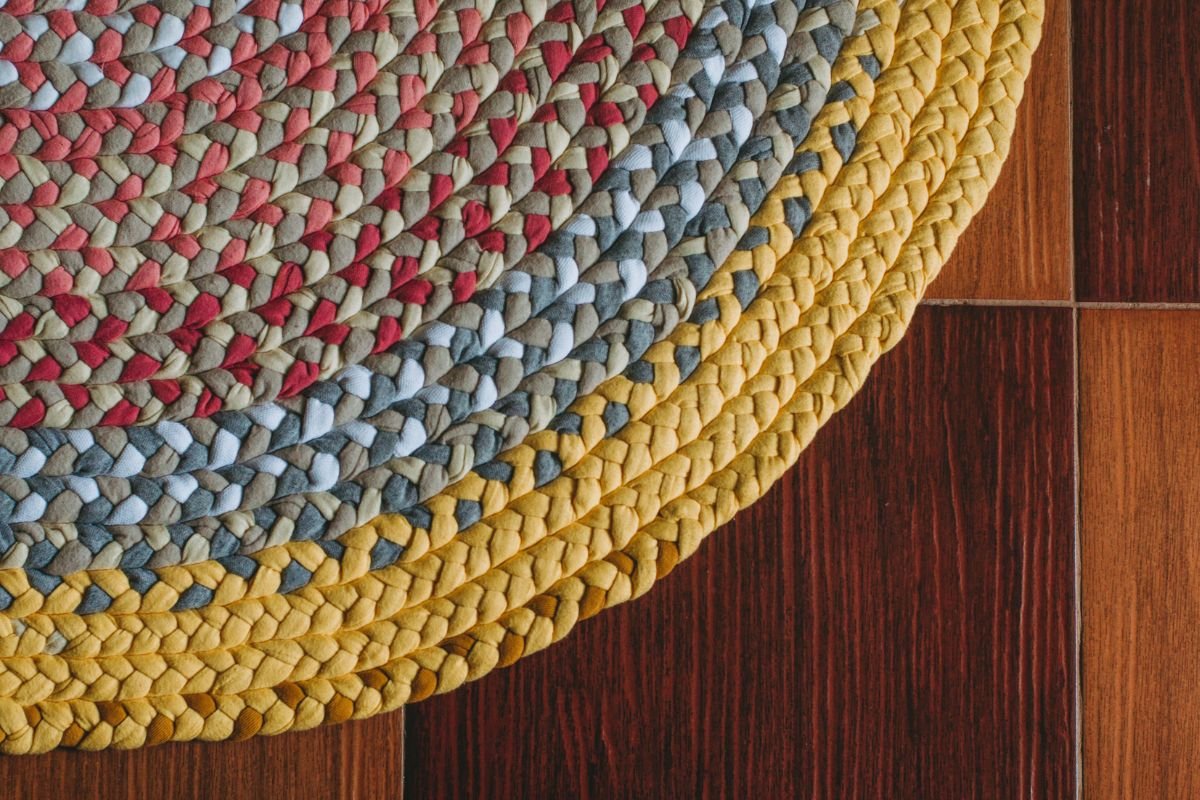
- Synthetic materials (such as polypropylene, nylon, or polyester): Synthetic rugs are typically easy to care for and can be cleaned with regular detergents and water. Use a mild detergent and lukewarm water to spot clean any soiled areas, and rinse the rug thoroughly with clean water. You can also use a steam cleaner to loosen and remove dirt and stains. Lay the rug flat to dry, or hang it on a clothesline or other hanging apparatus.
- Jute: Jute rugs are made from a natural fiber that is durable and resistant to stains, but they can be difficult to clean. Use a mild detergent and lukewarm water to spot clean any soiled areas, and avoid soaking the rug. Rinse the rug thoroughly with clean water, and allow it to air dry completely before using it again. Avoid using harsh chemicals or abrasive cleaners on jute rugs, as these can damage the fibers.
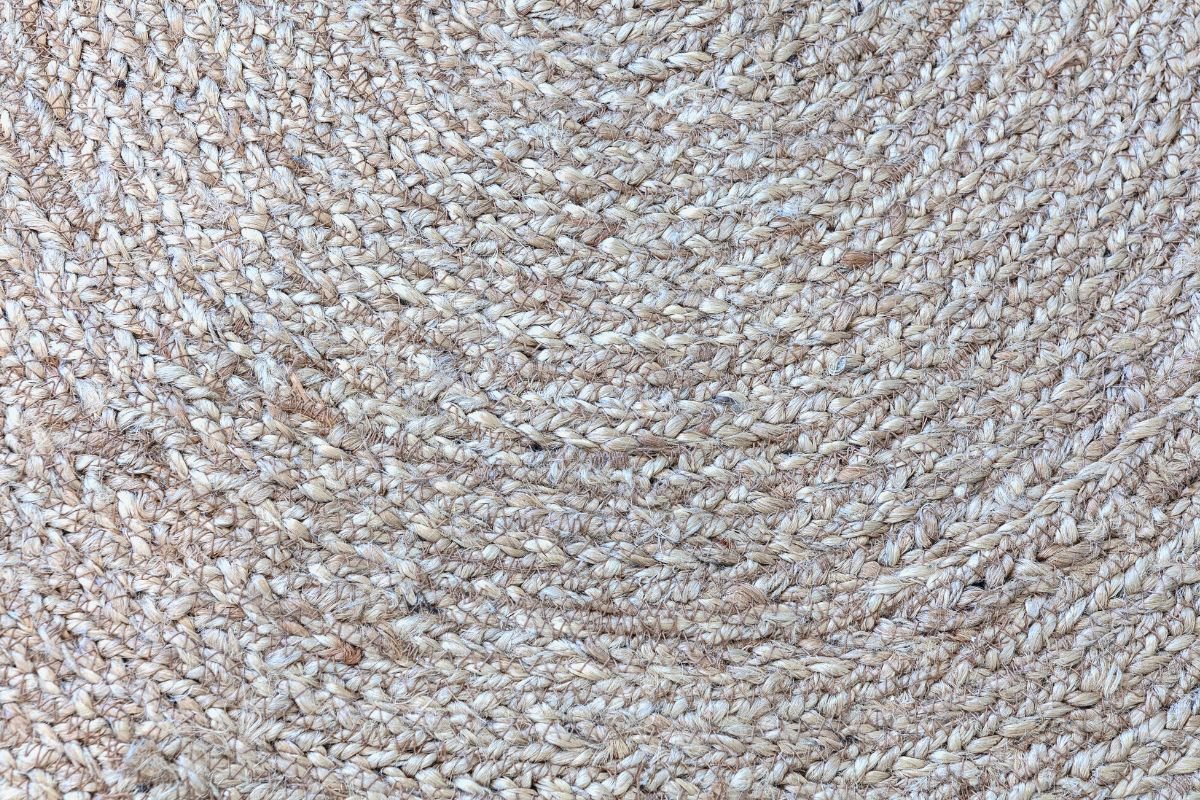
- Sisal: Sisal rugs are made from a natural fiber that is durable and resistant to stains, but they can be difficult to clean. Use a mild detergent and lukewarm water to spot clean any soiled areas, and avoid soaking the rug. Rinse the rug thoroughly with clean water, and allow it to air dry completely before using it again. Avoid using harsh chemicals or abrasive cleaners on sisal rugs, as these can damage the fibers.
- Seagrass: Seagrass rugs are made from a natural fiber that is durable and resistant to stains, but they can be difficult to clean. Use a mild detergent and lukewarm water to spot clean any soiled areas, and avoid soaking the rug. Rinse the rug thoroughly with clean water, and allow it to air dry completely before using it again. Avoid using harsh chemicals or abrasive cleaners on seagrass rugs, as these can damage the fibers.
In general, it’s important to be gentle when cleaning braided rope rugs, as the braids can be delicate and may become damaged if subjected to harsh cleaning methods. Always test a small, inconspicuous spot before applying any cleaner or detergent to the entire rug to ensure that it does not discolor or damage the fabric.
More Cleaning Tips

Here’s the best robot vacuum for thick carpet
Here’s the best robot vacuum for thick carpet that is low maintenance, durable, and long-lasting.

Can Roomba go over rugs? Some of them.
Can Roomba go over rugs? Some of them. Here’s how to know if you can use Roomba in your home.
![[SOLVED] Best vacuum for area rugs in 2023](https://rugsandpads.com/wp-content/uploads/2023/02/best-vacuum-for-area-rugs-768x512.jpg)
[SOLVED] Best vacuum for area rugs in 2023
These are the best vacuums for area rugs and all other floor types, from someone who moves often.
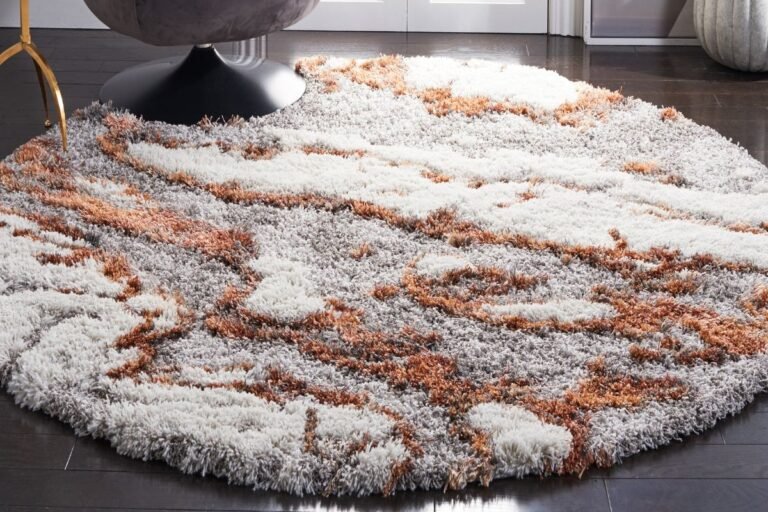
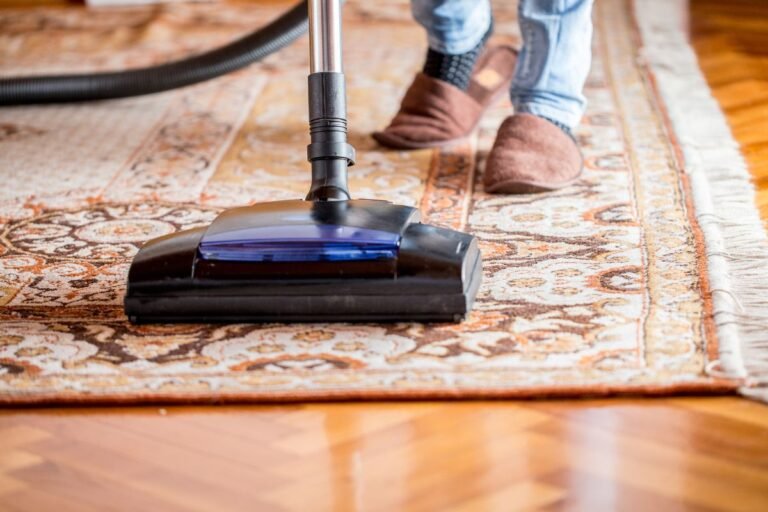
Can You Use A Carpet Cleaner On A Rug? It Depends.
Can you use a carpet cleaner on a rug? Learn which area rugs you can use a shampooer on and which are best for soapy water instead.
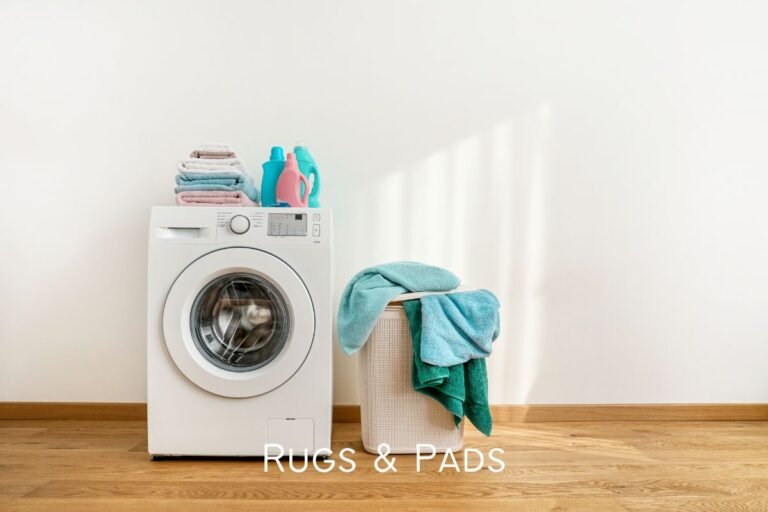
Can You Put Rugs In The Washer? Yup, Here’s How.
If you’re wondering if you can put rugs in the washer, the answer is ‘maybe’. It depends on the rug material and stains. Here’s what to do with your rug.







